In college, I took a 5 credit class called “Textiles”. I love to sew, but that class was pretty overwhelming. There was so much information taught that I was so obviously not going to maintain. Having a resource, like a book or website, to turn to for specifics about fabric when you need it is awesome, but you only need to really know so much when you’re just starting.
3 BASIC FABRIC TYPES
The differences between these 3 fabric types are not found in the fibers used (cotton, polyester, etc.), but rather in the method used to make them.
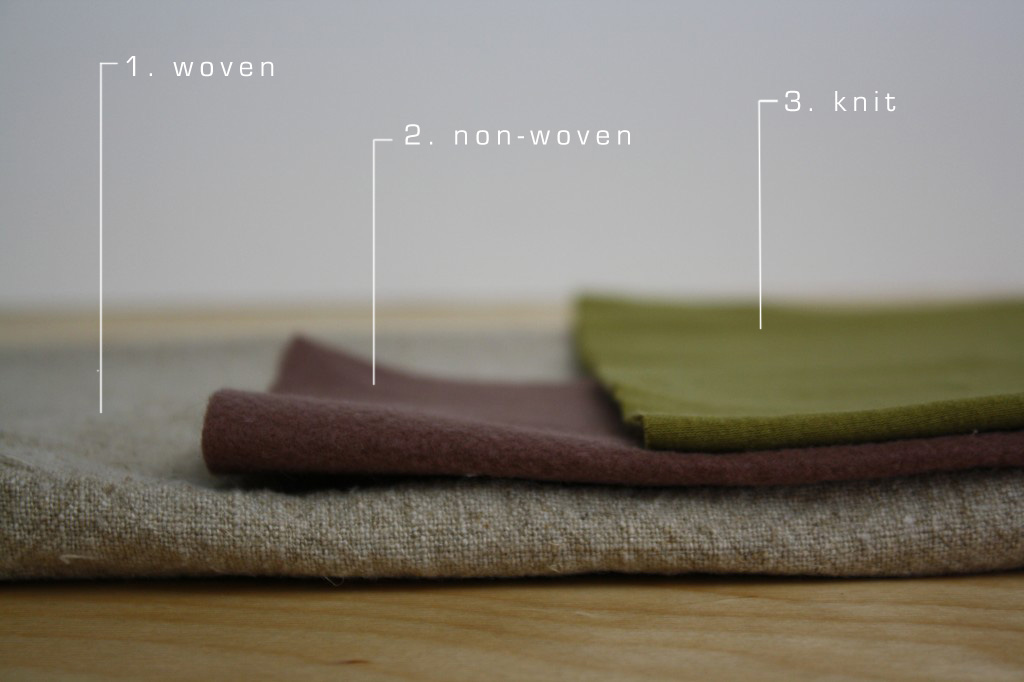
1: Woven fabric is a non-stretch material (unless is has been woven with elastic, like in your jeans). It’s produced on large looms that weave yarns together vertically and horizontally with an over-under pattern. Because of this weave, the edges fray when cut. The majority of fabrics found at the fabric store are woven.
2: Non-woven fabric is made of small fibers held together by heat and pressure, sometimes even glue. When you cut it, the edges don’t necessarily fray, but the material can be pulled apart if you tug on two ends. Examples of this are the felt you use for crafting, or even disposable diapers!
3: Knit fabric is the hardest to sew with, because it has a considerable amount of stretch to it. Picture the sweater that your Aunt Jeanie knit by hand; knit material is mass-produced the same way, using knitting machines. It doesn’t fray, but tends to curl at the ends when it’s been cut. Knit fabrics are used for products like t-shirts and women’s swimwear.
If you have scraps of any of these 3 fabric types, cut a 1″ square and attach it next to it’s description on the “Fabric Basics” page in the sample book.
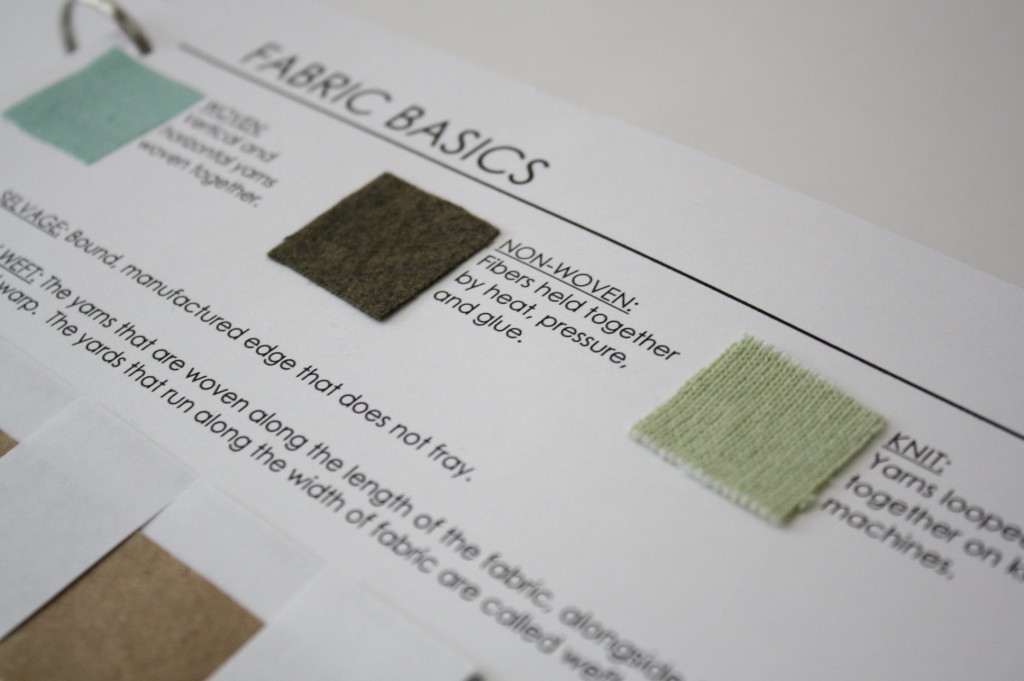
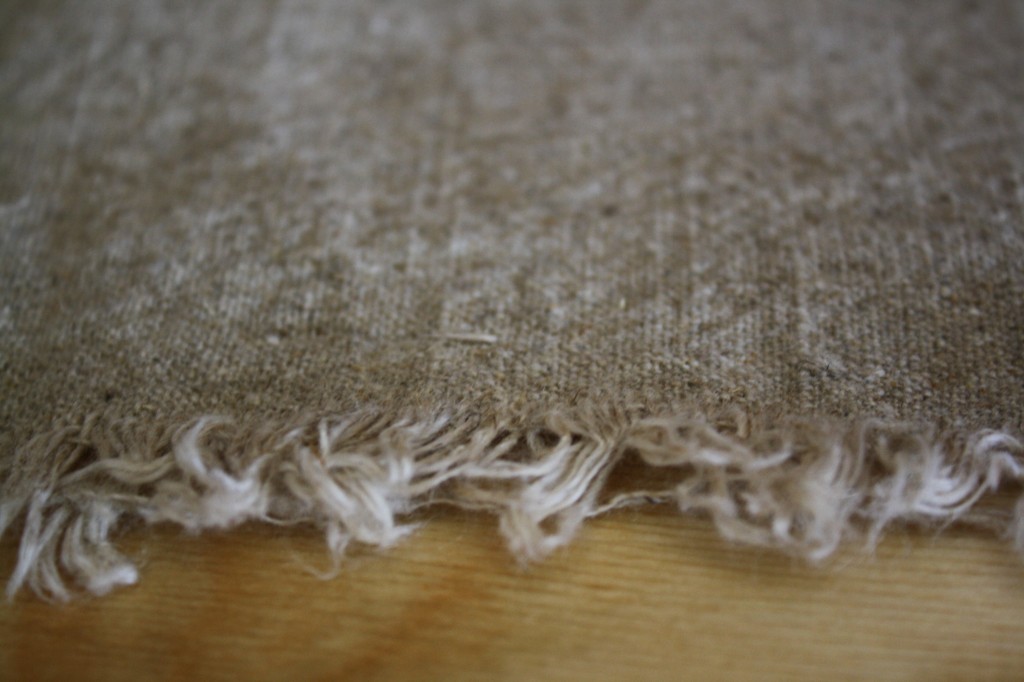
In this course we will be working with woven fabrics, because it is the most basic to sew with and maintain. So let’s learn a little more about woven fabrics, shall we?! Don’t be overwhelmed by the information, this is just to help give you a general idea of how the weave works, you don’t have to have it all memorized.
SELVAGE
When you buy material off the bolt at the fabric store, it comes with a set width (45″, 60″, etc.), which will be labeled on the end of the bolt. The length of your cut of fabric will depend on how much you choose to purchase. If I buy 1 yard of fabric (36″) that comes in a 45″ width, I will end up with a piece of fabric 36″X45″ to work with. The two sides of your material that run lengthwise are usually manufactured with a bound edge that does not fray, known as the selvage.
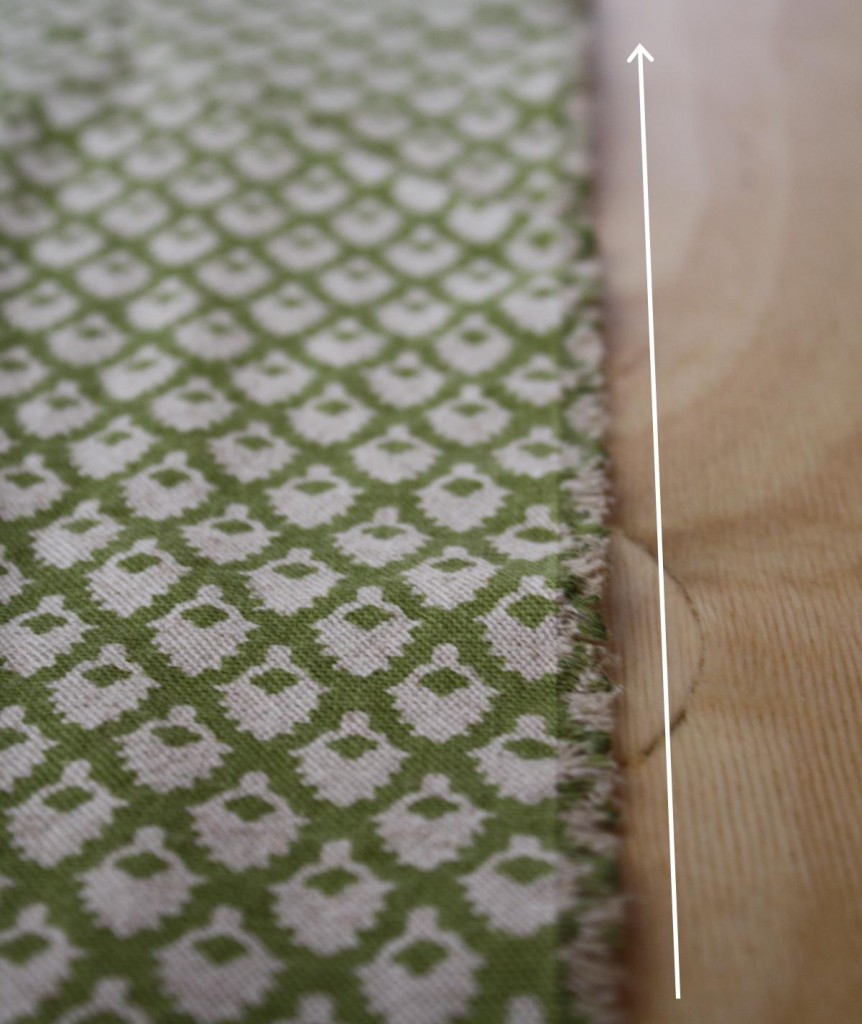
WARP/ WEFT
The yarns that are woven along the length of the fabric, alongside the selvage, are called warp. The yarns that run along the width of fabric are called weft. Sometimes a pattern is woven into a fabric by using varying colors of yarns in the warp and weft, creating stripes, checkers, or plaid. Other times, a pattern is simply printed on top of a pre-woven material.
For your first sample, cut 4 strips of paper 1″x5″ of one color, and 4 strips of paper 1″x5″ of a contrasting color. Lay them out in warp (vertical) and weft (horizontal). Weave the strips together loosely and then push the warp and weft “yarns” close together to create a tight, secure weave.
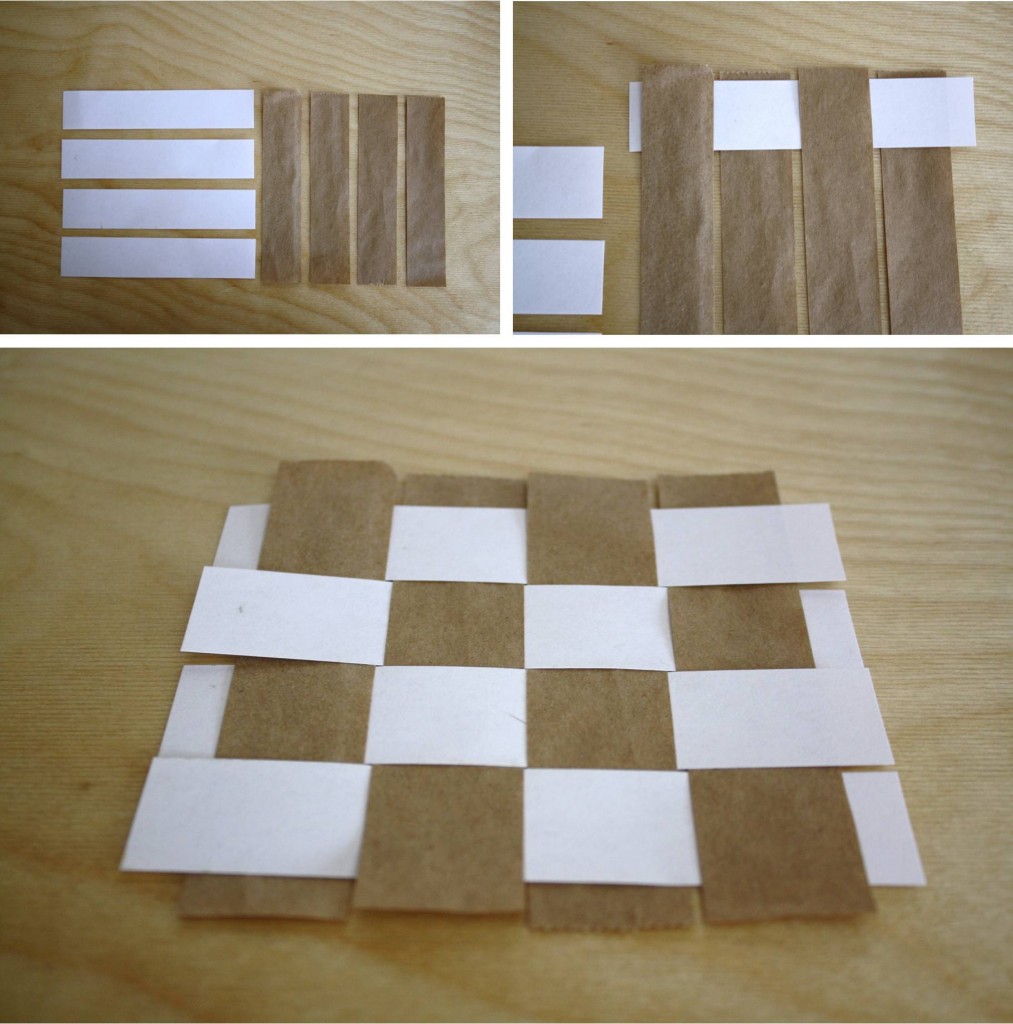
Add this sample to the sample book on the “Fabric Basics” page.
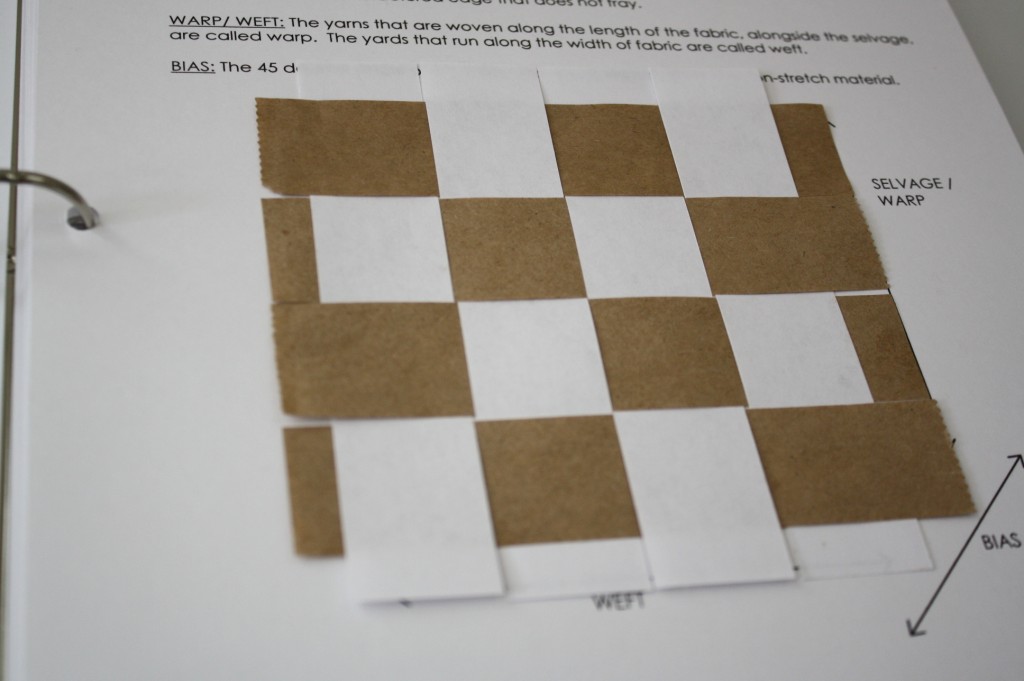
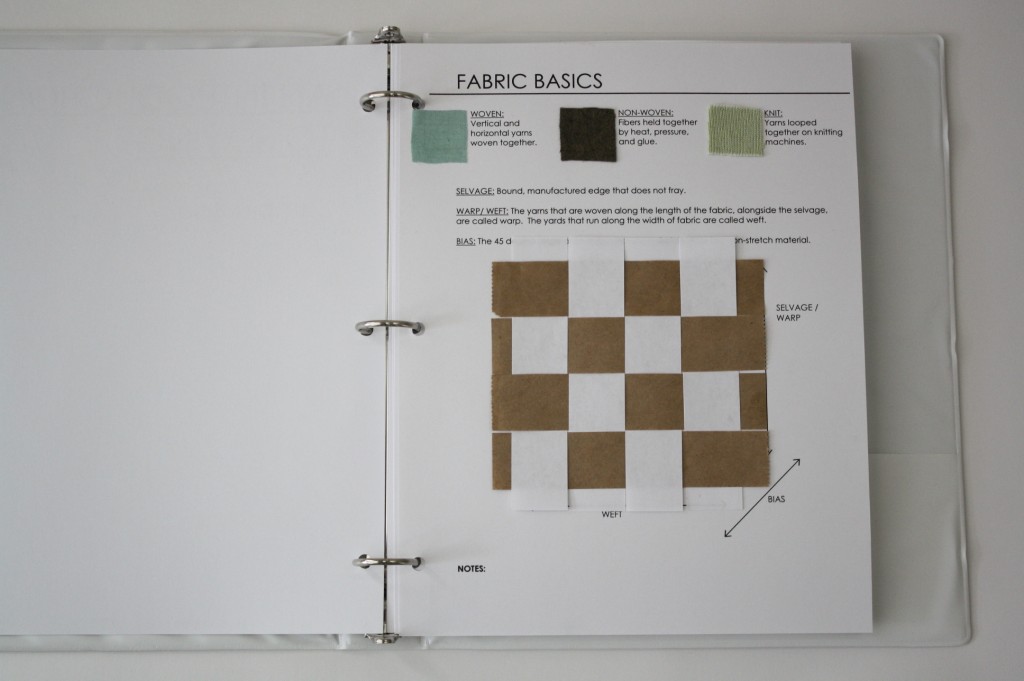
GRAIN
The warp threads indicate the grain. In other words, the grain of the fabric runs along the length. When pattern pieces are cut off grain (slanted), the end result can end up skewed and twisted.
BIAS
Bias is the 45 degree angle of the fabric. Try tugging on a piece of woven fabric along the width. No stretch. Now try tugging on the same fabric along the length. Still no stretch. But, if you tug on it at a 45 degree angle- there’s some stretch! That’s called the bias. Sometimes a pattern will tell you to cut something out on the bias to take advantage of that stretch.
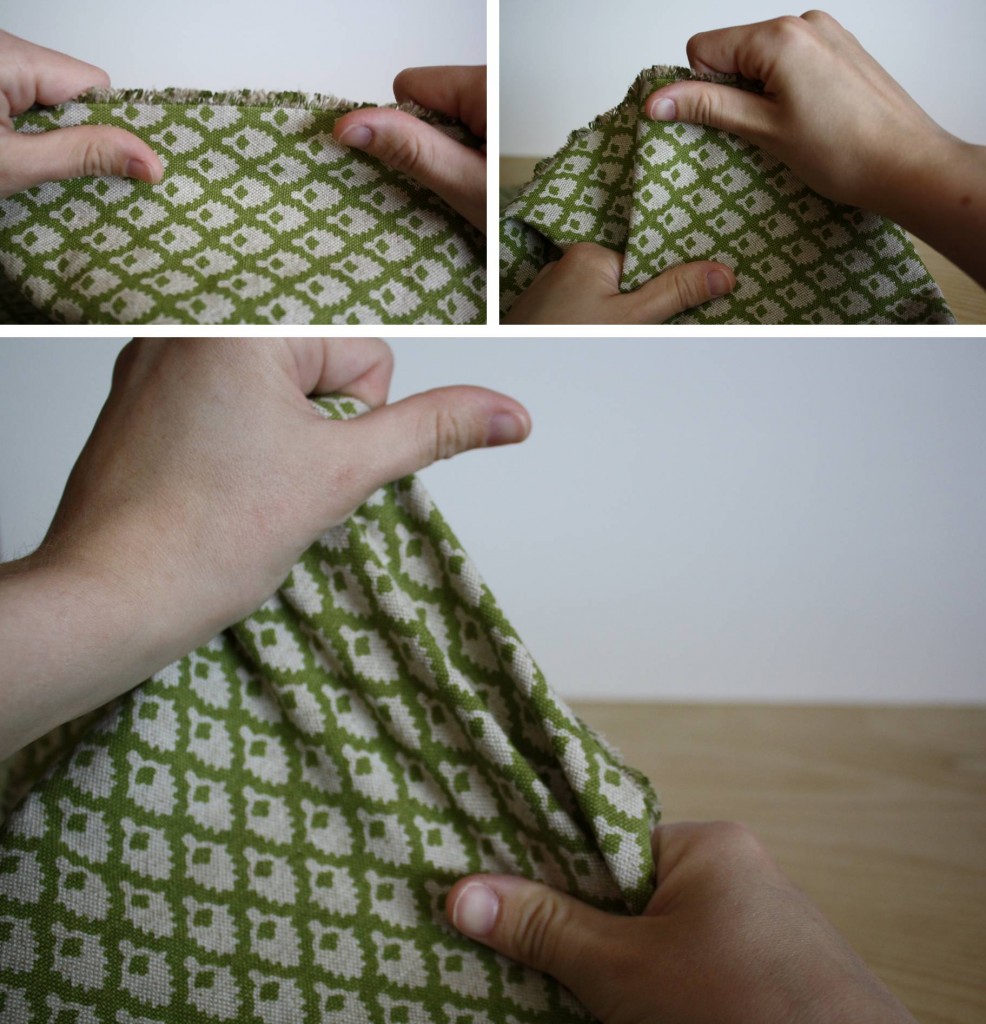
HOMEWORK
Find 1 yd. quilting cotton (preferably a solid color) for the sample book
I’ve wanted to learn to sew forever! I have a million designs drawn and so many fun, great ideas for pieces I’d love to make for myself but can’t make a thing. The only thing I’ve ever learned to do is hem things. This has saved me some money at times but I can’t sew anything else. I’m hoping this will help.
Impressive overcome! I have to beginner while doing so while you amend your site, how to sign up to for the blog site web site? The actual bill made it simpler for us a proper offer. I were being a bit familiarised of this your own transmit offered great translucent strategy
loving this!